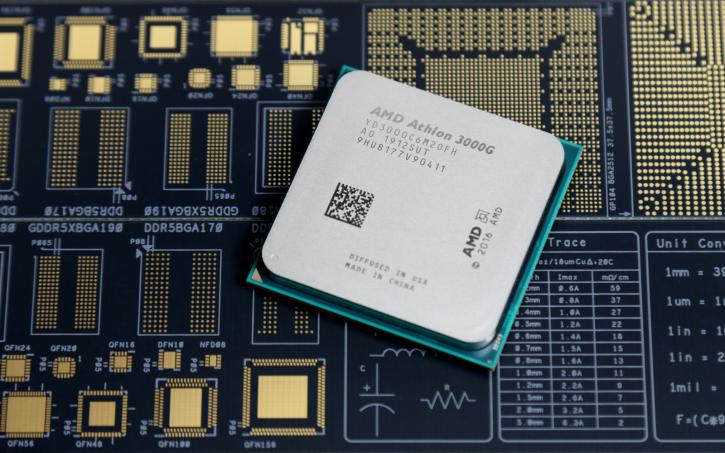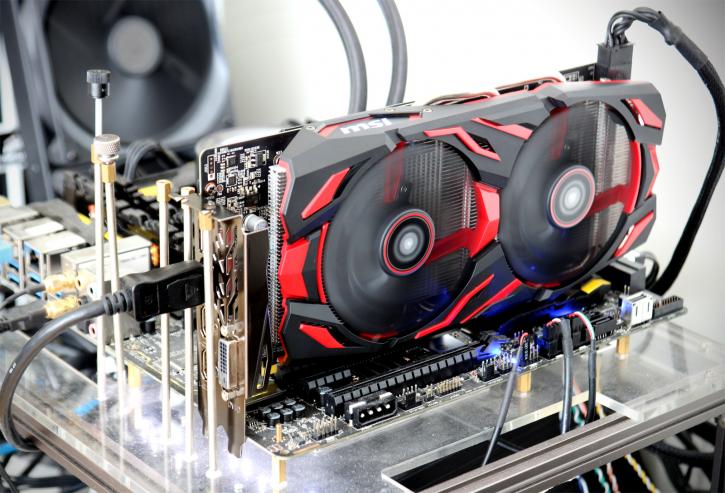The Budget Build
The 'Budget' Build
This is, for those not in the know, the 'budget' build. We are targeting (depending on deals and pricing, plus location) a total budget of c. $300-350 USD, here. For this price, the one thing you are absolutely not going to be getting your hands on is a GPU. Note that we are using all new parts, here. This might not be the most sensible option for budget PCs, but the used market is a minefield. For the record, I am 100% aware of the kind of PC you can put together from used parts that will fairly handily beat this one, especially in graphics. However, that is not the purpose of this guide. End of. As before, I will be looking at the budget end of the market without a GPU first, and then considering what GPU you might pair with a system of this caliber. With that, onto the choice of parts... I think you can probably see what is coming, right?
CPU - AMD Ryzen R3 3200G
AMD’s R3 3200G (review) was a popular product in its 14nm ‘2200G’ form, and now we have a 12nm ‘Zen+’ based CPU with higher clocks, a still unlocked multiplier, and – crucially – a soldered HIS. This means some quite outrageous overclocks have been achieved, especially on the integrated Vega 8 GPU. The product comes with an adequate stock cooler, and it can be used to eke out some extra performance from the GPU (which, as previously mentioned, can be overclocked). The CPU portion of the product packs 4 Zen+ cores without multi-threading, so don’t expect blistering speeds. It will, however, be plenty to drive the onboard graphics and provide an extremely snappy/smooth Windows experience.
Motherboard - AsRock B450M Pro4
Picking this motherboard was really simple. It is cheap, provides 4 RAM slots, a single M.2 SSD slot, and a robust enough VRM to handle really any Zen+ or Zen 2 based CPU up to the R7 2700X or R7 3700X (any higher and I would encourage… well, not going any higher). There really is not much more to say, here. Onboard audio uses the well known Realtek ALC 892 codec. Is it the best? No, absolutely not. Will it ‘do’? Yes, probably. If you don’t like it at all, nab a sound card or USB DAC or amp.
RAM – 16GB Team Force ‘Vulcan Z’ 3000Mhz (CL16)
Controversially, perhaps, I have chosen to opt for 16GB of memory. Whilst this might be seen as overkill, 16GB of RAM is vital for a positive experience on gaming orientated computers in 2020. Do you need 16GB of RAM for a home/regular use PC? No. This, though, is a gaming system. The above – having used it before – is a solid RAM kit that will easily clock up to the rated XMP profile on modern AMD motherboards and their associated BIOS revisions. Of that I have absolutely no doubt. If you need to drop the system cost below the $350 mark for whatever reason, 8GB of the same memory will absolutely suffice. If you are using this system for anything that isn’t gaming (e.g. home media server), 8GB of whatever memory you can find at whatever speed you can find will also work (review).
Storage – 256GB ‘TeamGroup’ MS30 M.2 SATA SSD
The motherboard chosen comes with a single M.2 slot, and we are going to use it. This is currently the cheapest 256GB SSD that I can find on PCPartPicker, 2.5’’ SSDs included. Whilst not of the faster ‘NVMe’ standard, it will still provide all the modern-day snappiness Windows 10 needs to feel like a premium experience. I am also aware that 256GB is really not much storage on a modern PC. However, a 128GB SSD and HDD combo is actually more expensive than this and trying to run any modern title off of a spinning hard drive is very much an exercise in extreme patience.
Case & PSU
The case is very much ‘up to you.’ Bear in mind that the motherboard picked for this PC is of the Micro-ATX (aka. mATX) standard. If you want a flat-lying or HTPC style PC, you will likely need to drop down to the smaller (and more expensive) ITX B450 boards. The PSU is a more objective choice. Whilst we would always like to recommend at least an 80+ Bronze semi-modular PSU, the reality is that these cost a relatively high amount in 2020, and I am sure that COVID-19 has a lot (if not everything) to do with this problem. If anyone has any indication as to why PSUs are relatively expensive of late, I would be very interested to hear from you in the comments! Whilst supply may well return to normal soon, we have opted for the non-modular 80+ rated Thermaltake ‘Smart’ 500W PSU. 500W is certainly overkill, but I do not feel comfortable recommending anything ‘less,’ and the overcapacity does mean the adding of a mid-tier GPU is more than plausible down the line.
Chassis, we offer many reviews on them, have a peek over here.
GPU choice – AMD Radeon RX 570 (with some reservation)
I think – if my memory serves me correctly – that the last 2-3 iterations of this guide have been an emphatic recommendation for a singular GPU. The Radeon RX 570 4GB (review). For all of £/$120-130, you got a seriously capable 1080p GPU that could even muscle in at 1440p if you really wanted it to.
So, is that recommendation still valid? Ultimately, yes, it is. For the low price of some RX570 models (just £/$120), the price vs. performance cannot be beaten. However, there are caveats, and these come in the form of Nvidia’s GTX 1650 ‘Super,’ and AMD’s RX 5500 XT (review). Nvidia’s GTX 1650 Super can be bought for around $160, and – for that – you get an incredible power-efficient GPU that is not too far removed from the performance of Nvidia’s own GTX 1660. That said, it is relatively VRAM limited (4GB), meaning that some games will choke thanks to the limited frame buffer. Yes, sure, this also applies to the 570, but that card is up to $40 less.
The second kid on the block is the Radeon division’s RX 5500 XT. Based on the 1st generation ‘Navi’ GPU architecture. Recent updates have seemingly solved the previous woes suffered by AMD’s 20 series edition drivers, and that is the last I will say on the matter. Game for game, the 5500XT and 1650 Super come out relatively evenly tied. Given the price point this PC covers, I would still likely recommend the 570. If, however, you want a piece of the current generation of GPUs, I would probably steer people towards the 1650 Super. Why?
Firstly, whilst the 5500 XT and 1650S are comparable in performance, there are 2 extra considerations, A) form factor, B) power usage. The 1650 might well be an upgrade to a relatively small ex-OEM system, meaning that the generally smaller available GPUs using the 1650S chip might be a better fit.
The second reason is power usage. Yes, AMD’s Navi GPUs are far ahead of their Polaris parents in terms of power efficiency. However, Nvidia’s Turing architecture is still ahead, and that is why the recommendation comes down on Nvidia’s side, here. Nearly equal performance, but more efficient.
Now we move on to our 'mid-range' build



